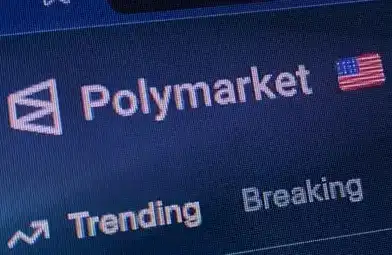Ethereum’s Holesky Testnet Enters Its Final Phase
Quick Take Summary is AI generated, newsroom reviewed. Holesky testnet shutdown begins this week, with operators deactivating nodes over ten days. Ethereum Foundation cites completion of Fusaka testing and technical evolution as reasons for closure. Validators should migrate to Hoodi, while developers move to Sepolia for application testing. The shift marks Ethereum’s new modular testnet era, ensuring faster, cleaner, and scalable testing environments.References 🚨 UPDATE: Ethereum Foundation announces Hol
The Ethereum Foundation has officially announced the start of the Holesky testnet shutdown. The decision follows the successful completion of the Fusaka upgrade testing, which achieved all its technical goals. Over the next ten days, operators will begin deactivating their nodes and migrating resources to newer test environments.
This concludes a significant chapter in the history of testing on Ethereum. The Holesky testnet was valuable in testing the participation of validators at scale, as well as testing upgrades on the network. The Holesky testnet launched in 2023 and was the testnet for testing high-capacity validators and new consensus mechanisms ahead of deploying them on the mainnet.
The Ethereum Foundation stated that the network has “fulfilled its intended purpose” and will now be gradually decommissioned. Developers and validators are being advised to transition their setups to other active testnets. The degradation phase has already begun and will continue through the next ten days until full shutdown.
🚨 UPDATE: Ethereum Foundation announces Holesky testnet degradation begins this week after serving its purpose for Fusaka testing.
— Cointelegraph (@Cointelegraph) October 21, 2025
Operators will shut down nodes over the next 10 days. pic.twitter.com/molA1zDAl6
Why Ethereum Is Shutting Down the Holesky Testnet
The Holesky testnet was designed as a large-scale simulation environment for validator testing and protocol upgrades. However, after the Fusaka upgrade, its role diminished as newer, more efficient testnets emerged. The Ethereum Foundation clarified that the network had reached its end, and maintaining it no longer aligned with Ethereum’s long-term infrastructure goals.
Holesky also began to show performance degradation. Validator inactivity, growing exit queues, and scalability challenges made the testnet less efficient. Instead of an aging system, Ethereum chose to evolve its testing framework toward special environments.
What the Shutdown Means for Validators and Developers
The testnet shutdown process will occur over ten days wherein operators will gradually begin turning off their nodes. Validators should exit Holesky and prepare to migrate to the Hoodi testnet. This will replace Holesky for validator lifecycle and staking infrastructure testing. Developers should migrate any smart-contract testing and dApp staging environments to the Sepolia testnet, as it is the preferred zone for application-level testing. Infrastructure providers should shift their resources, bandwidth, and client configuration to the new networks.
If they act early, developers and validators can avoid downtime and comply with Ethereum Foundation’s updated testing strategy. Migration will lead to the smoothest transition for future upgrades and a uniform development experience.
The Broader Impact on Ethereum’s Ecosystem
The closing down of the Holesky testnet highlights Ethereum’s maturity and ability to change its testing infrastructure. This not only shows the ability of the Foundation to change and improve resources but also to remove a vestige of an older system.
For developers, this is a cleaner and more efficient testing environment. For validators, this will enable the community to enjoy a more seamless upgrade cycle and improved management of the testing infrastructure. It will also improve reliable data availability and the overall Layer-1 and Layer-2 performance.
By decommissioning old testnets, Ethereum is able to direct its work towards furthering its ecosystem: a sustainable, high-performance blockchain ecosystem. The Foundation’s literally organized, structured application of testnet management keeps the Ethereum ecosystem agile and postured for its vision of long-term scalability and security.
Final Thoughts
The finishing the Holesky testnet marks the beginning of a new era in testing on Ethereum . With the Ethereum Foundation’s dedication to developing a defined path moving forward for validators and developers, there is reason for optimism transitioning to next-generational testnets. As the ecosystem evolves, this is yet another meaningful way Ethereum re-enforces its focus on being an innovative and trusted platform. It values precision, scalability, and adaptation.
Disclaimer: The content of this article solely reflects the author's opinion and does not represent the platform in any capacity. This article is not intended to serve as a reference for making investment decisions.
You may also like
How to achieve an annualized return of 40% through arbitrage on Polymarket?
By demonstrating arbitrage structures with live trading, this provides a clear reference for the increasingly intense arbitrage competition in the current prediction markets.

Interpretation of ZAMA Dutch Auction Public Sale: How to Seize the Last Interaction Opportunity?
ZAMA will launch a sealed-bid Dutch auction based on fully homomorphic encryption on January 12, selling 10% of its tokens to achieve fair distribution, with no front-running and no bots.

Standard Chartered Bank lowers its 2025 Bitcoin price forecast to $100,000.
